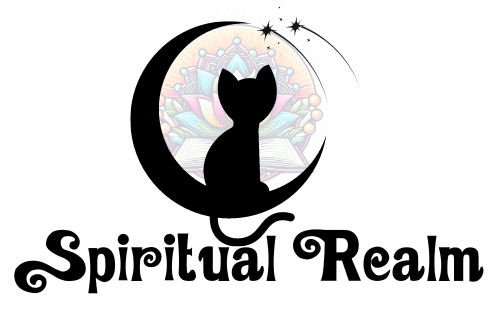Spiritual Colours and Their Meanings: Unlock Vibrant Energy Today!
Have you ever noticed how colors can evoke emotions and feelings? The vibrant hues around us hold deeper meanings that resonate with our spirit. Let’s dive into the world of spiritual colors and see how they can illuminate your life.
Spiritual colors represent different energies and emotions. For example, blue symbolizes peace and calmness, while red signifies passion and strength. Each color carries unique vibrations that impact our well-being.
Curious about which colors resonate with your soul? Unraveling these meanings can enhance your daily experiences and choices. Get ready to explore a colorful journey that connects art, emotion, and spirituality!
The Significance of Spiritual Colors in Daily Life
Spiritual colors play a vital role in our daily experiences. They influence our thoughts, feelings, and even interactions with others. Each color resonates with specific energies that can enhance or diminish our emotional state.
The significance of these colors extends beyond mere aesthetics; they can guide us toward greater well-being. Incorporating spiritual colors into your life fosters a harmonious environment, whether at home or work.
Emotional Impact of Colors
Colors have profound psychological effects on individuals. For instance, yellow is linked to optimism and clarity while green embodies growth and renewal.
“Color is the keyboard, the eyes are the harmonies, the soul is the piano with many strings.” – Wassily Kandinsky
This quote encapsulates how vibrant hues interact with our emotions. Understanding these connections allows for intentional design choices that uplift mood and promote positivity.
Cultural Associations of Colors
Diverse cultures attribute different meanings to various colors. In Eastern traditions, red symbolizes good fortune and joy, while in Western contexts it often represents love or anger.
- Purple: Associated with spirituality and luxury.
- Blue: Represents tranquility and trustworthiness.
- Brown: Stands for stability and reliability.
Acknowledging these cultural nuances enriches your appreciation for color’s role in society. It also helps create spaces that resonate positively across diverse groups of people.
The Practical Application of Spiritual Colors
You can easily incorporate spiritual colors into your everyday life through clothing choices or interior design decisions. A soft blue wall may evoke calmness in a bedroom setting, enhancing relaxation during rest periods.
| Color | Description | Mood Effect |
|---|---|---|
| Pink | Loving energy that promotes compassion | Nurturing feelings & comfort |
| Tangerine Orange | Energizing hue symbolizing enthusiasm & creativity | Motivation & excitement boost |
Selecting clothing or decor intentionally based on their spiritual significance creates an atmosphere conducive to well-being. Choose shades that align with your current emotional needs; this practice could lead to positive changes over time!
Vibrant Shades and Their Unique Spiritual Associations
Colors play a crucial role in our emotional landscape. Each vibrant shade resonates with specific energies, influencing our mood and spirit. Understanding these associations allows us to enhance our daily experiences through intentional color choices.
For instance, the deep richness of purple is often linked to spirituality and intuition. It encourages creativity while promoting a sense of calmness. In contrast, yellow radiates warmth and joy, symbolizing optimism and clarity.
The right colors can create balance in your life by aligning with your inner self.
Key Colors and Their Spiritual Meanings
| Color | Spiritual Meaning |
|---|---|
| Red | Passion & Strength: Represents energy, action, and motivation. |
| Blue | Peace & Calmness: Encourages tranquility and communication. |
| Green | Growth & Balance: Symbolizes renewal, harmony, and healing. |
| Purple | Sensitivity & Wisdom: Promotes spiritual growth and higher consciousness. |
| Yellow | Joy & Clarity: Evokes happiness, intellect, and positivity. |
| Orange | Creativity & Enthusiasm: Inspires excitement, vitality, and warmth. |
A deeper connection with these shades can be achieved through mindful observation. Integrating them into your environment or wardrobe may amplify their effects on your well-being. Surrounding yourself with vibrant hues fosters a positive atmosphere that uplifts the spirit.
Your journey into the world of colors doesn’t need to stop here; it can unfold as you become more aware of how different shades influence your emotions each day. Recognizing which colors resonate most deeply within you adds another layer to personal expression!
How to Use Color Energy for Personal Growth
Colors can significantly impact personal growth by influencing emotions and behaviors. Utilizing the energy of different colors allows individuals to align their surroundings with their aspirations. By consciously integrating specific hues into daily life, one can enhance motivation, creativity, and overall well-being.
Incorporating color energy is a practical approach that requires awareness and intentionality. Each color can stimulate distinct feelings and mindsets, making it essential to choose wisely.
Selecting Colors Based on Intentions
Understanding the emotional resonance of colors helps in selecting those that support your goals. Here are some common colors and their corresponding energies:
| Color | Energy & Emotion |
|---|---|
| Red | Passion, strength, action |
| Blue | Calmness, peace, trust |
| Green | Growth, healing, balance |
| Purple | Spirituality, creativity, wisdom |
| Yellow | Happiness, optimism, clarity |
| Orange | Enthusiasm, vitality, adventure |
Transformative Effects of Color on Mind and Spirit
The effects of color on the mind and spirit are profound and multifaceted. Each hue not only stimulates our senses but also influences our emotions, thoughts, and overall well-being. Colors can uplift moods, inspire creativity, or even promote relaxation.
Research shows that colors have specific psychological impacts. For instance, studies from universities reveal that warm colors like red and orange can boost energy levels while cool tones such as blue foster tranquility.
“Color is the keyboard; the eyes are the harmonies; the soul is the piano with many strings.” – Wassily Kandinsky
The Psychological Impact of Color
Colors affect how we perceive our environment. They evoke feelings that range from calmness to excitement:
- Red: Associated with passion and urgency.
- Blue: Evokes a sense of peace and stability.
- Green: Represents growth and renewal.
- Purple: Linked to spirituality and introspection.
This emotional connection to color makes it essential in various aspects of life—be it art therapy or interior design. A 2020 study published in Psychological Science found that participants exposed to certain colors reported different emotional states based solely on visual stimuli.
Cultural Associations with Colors
Cultures around the world attribute unique meanings to specific colors. Understanding these associations deepens our appreciation for their transformative power:
| Color | Cultural Meaning |
|---|---|
| Red | Loyalty (China), Love (Western cultures) |
| Blue | Status (Middle East), Trustworthiness (Western cultures) |
| Green | Nature (most cultures), Fertility (ancient Egypt) |
| Purple | Royalty & Spirituality |
Acknowledging these cultural nuances allows individuals to navigate their own emotional landscapes effectively through intentional color choices in daily life.
The Role of Color in Meditation and Healing Practices
Meditation practices often incorporate visual elements, including specific colors aimed at enhancing spiritual experiences. Light therapy utilizes colored lights believed to restore balance within both mind and body. According to a research review published in Journal of Integrative Medicine, exposure to particular wavelengths can significantly reduce anxiety levels among participants during meditation sessions.
This evidence reinforces how profoundly intertwined color is with mental health strategies—serving as an accessible tool for enhancing one’s state of being without needing extensive resources or training.
FAQs
How do spiritual colors affect personal energy?
Spiritual colors influence your personal energy by resonating with specific emotions and intentions. Choosing the right colors can help enhance your mood, motivation, and overall well-being in daily life.
Can colors impact meditation experiences?
Yes, integrating specific colors into meditation practices can deepen your experience. Colors like blue promote calmness while purple enhances intuition, helping you achieve a more profound meditative state.
What role do cultural meanings of color play?
Cultural meanings of color enrich our understanding of their significance. Different cultures attribute unique emotions to each hue, influencing how we perceive and interact with our surroundings on a deeper level.






